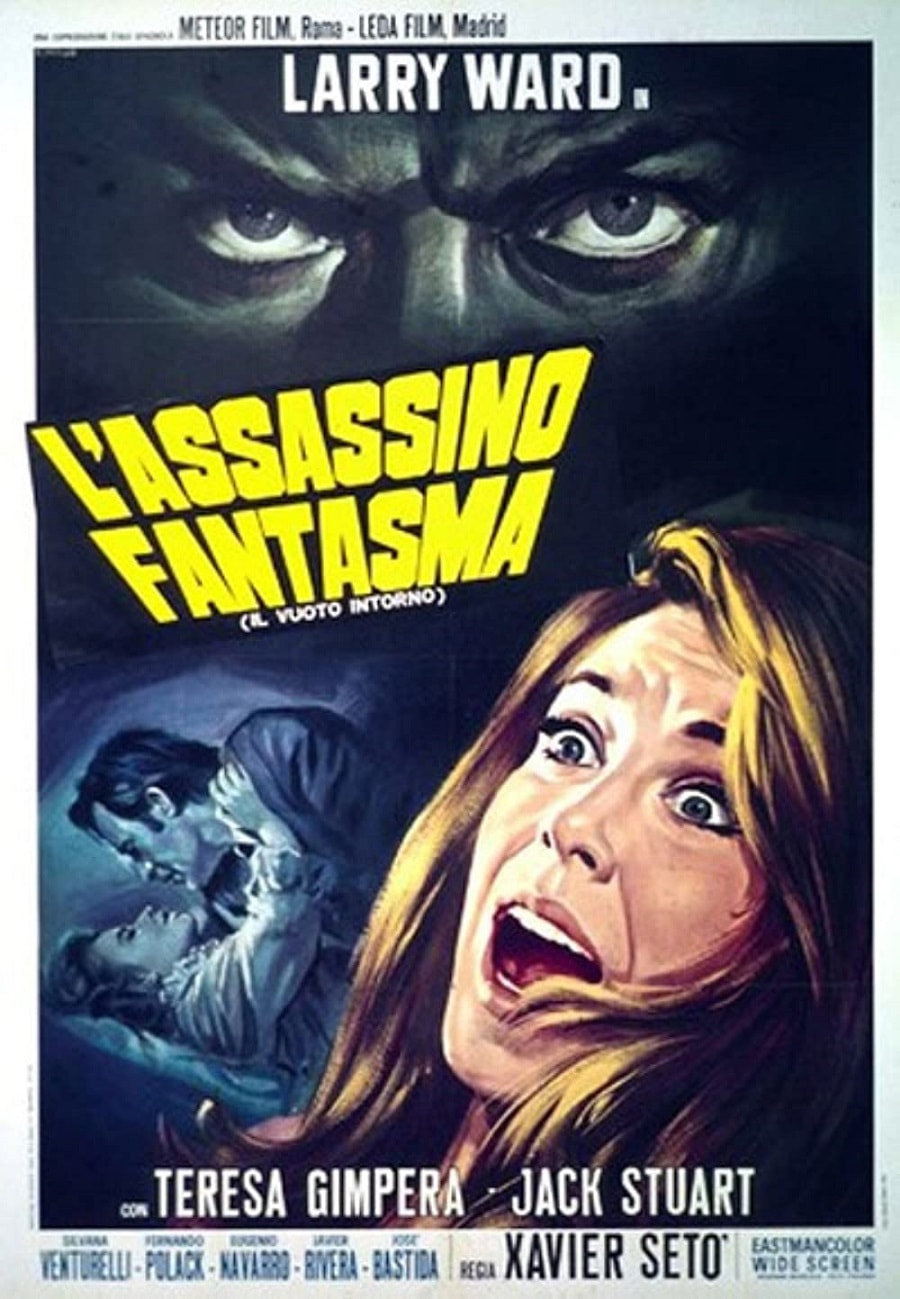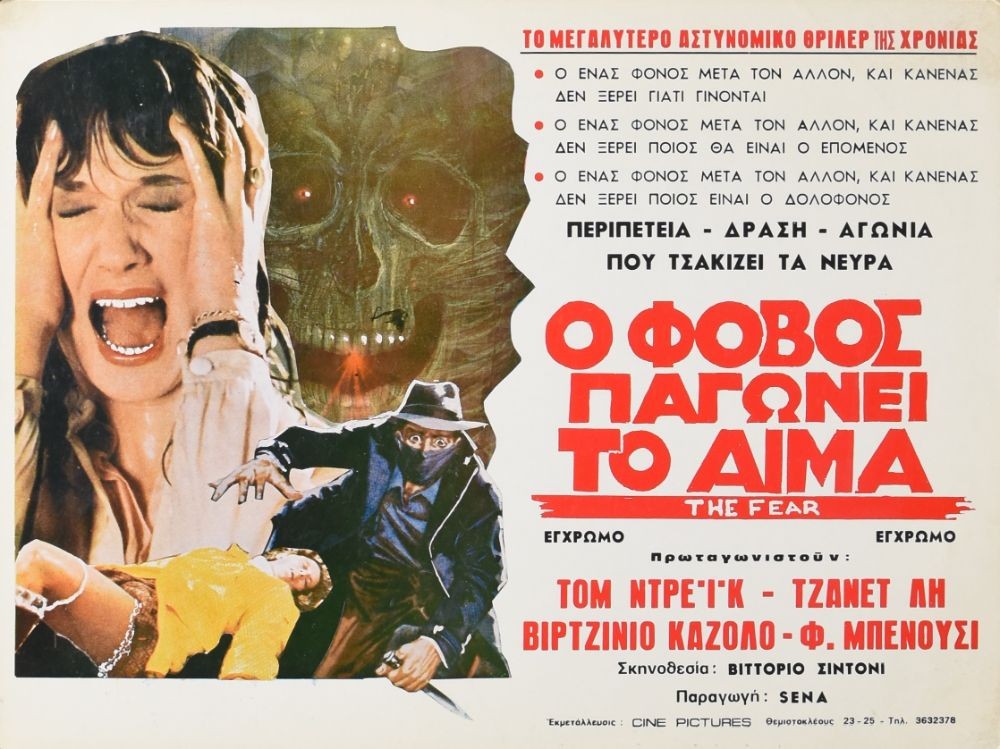Said blackmailer, Gert Mueller (whose identity is never obfuscated), drives to a small Spanish town to call on his ex-girlfriend, a former showgirl called Denise. His appeals for financial assistance are rejected out of hand, but he lands on a trump card when he discovers that Denise is having a secret affair with Peter, the twin of John, her husband. Gert attempts to turn this knowledge into cold hard cash via the medium of blackmail, only for the adulterous lovers to take advantage of the crisitunity, setting their own fiendish plot in motion with the aim of turning John mental and getting their hands on his vast fortune.
I should add that the reason the lovers can't just kill off John is because he's cut them out of his will, presumably having suspected that something was afoot. The exact details of their plan are vague, in that the means by which they intend to take control of John's fortune are never fully specified (presumably they hoped to assume Power of Attorney with John being confined to either a mental hospital or prison). A much simpler plan would be to kill John, and to pass the corpse off as Peter, who would then pretend to be John (trust me, that is a lot simpler than what plays out on screen). Of course, Gert would still have to be taken care of, but as long as he doesn't find out that John's dead he wouldn't pose much of a threat, as his threats to reveal the affair to John would be weightless, given John would be Peter (again, less confusing than the film). Even if Gert did find out the truth, he could just be murdered, and the body count would be no greater than what we end up with on screen.
But enough of what might have been (and I'll readily concede that the plot I've proffered above would make for a far more boring film). What is, is a fairly entertaining little number, which smacks of a few broad ideas which weren't quite developed sufficiently. The set-up (a blackmailer gives an adulterous couple an opportunity to dispose of an unwanted husband/brother) is fine, but there are more than a few instances where the lines joining the narrative dots are a little bit vague/unrealistic, which suggests to me that the script's first draft may have been rushed into production. When I'm writing, I tend to have a fairly tight handle on the overarching structure, and several key scenes/points, but the technicalities of getting from point A to point B are often something I gloss over initially, the idea being that it's better to complete a full first draft which can then be polished than to get tied up in minutiae and lose whatever passes for momentum in writing. Here, there's definitely a sense that the plot was constructed around a few key ideas, but the linking thread is extremely flimsy, and some pretty big liberties are taken with plausibility.
In particular, there are two instances which defy logic, or at least push the boundaries of realism. These deux Deus Ex Machinas involve a Mission Impossible-style mask which is worn by two characters (having apparently survived fully intact after being ripped from the face of the first one to sport it), and a strange process of hypno-suggestion, whereby false memories seem to be implanted in one character's subconsciousness via an ESP dialogue.
This latter process, which (and I don't think any readers will be shocked at this revelation) forms a crucial part of the scheming lovers' manipulation of John, is an especially confusing section of the film. John is kept heavily sedated - so far so good - and Peter seems to be able to communicate with him on an extrasensory, non-verbal plane (so far, less good). Somehow, he's able to convey the details of a series of things he's done whilst posing as his twin, so that John, when he comes out of his drug-induced haze, believes them to be his own memories. Other gialli (Nothing Underneath in particular) make dubious use of a supposed psychic link between twins, but there's no specific reference made here to the process by which Peter transfers the memories - it just seems to be a loose, undefined mix of drugs and twins.
*something about twin evils, drugs and greed?*
Even though John is the chief 'victim' here (apart from the people who die), he's not an overly sympathetic character, although his baffling eagerness to confess his alleged crimes to all and sundry (his doctor, the police, anyone willing to listen to him) is quirkily endearing. At least, it's endearing on one level, but on another, structural, level it's really just a narrative device to keep the film moving along - rather than the police taking time to track John down upon discovering evidence of a crime, which would be the usual practice, he speeds things up by presenting himself to them as a sacrificial lamb. There are other inconsistencies/lapses in logic, which again are designed to keep the film ticking along, and to buttress the atmosphere of mystery and confusion: why do the lights in the girl's apartment work perfectly all of a sudden? Why is the girl let go free? And why doesn't she take a leaf from John's book and go straight to the police when she is freed?
This is far from the only giallo which doesn't hold up to a close plot scrutiny, but it doesn't really hold up to any cursory examination whatsoever. The funny thing is that for the first hour or so there's no real mystery at play - we see the identity of the blackmailer from the off; we are aware of the affair right away; we know that the lovers are scheming to turn John insane and consequently take control of his money. It's just as well that the twists take a while in coming though, as keeping track of the John/Peter baiting and switching is challenge enough.
Overall, this isn't a classic, but it's a decent alternative to the sunnier Lenzi-type films which were coming out of Italy at the time. The acting is good, the music (rumoured to have been done by Morricone on the QT, but crdited to Franco Micalizzi) is solid (although there seems to be an attempt to imbue a recurring motif with hidden meaning which doesn't really work), and the cinematography is excellent. If you can overlook the occasional fudging of logic, and keep up with who's who and what's what, then there's much to enjoy here for fans of less murder-by-numbers gialli.


 RSS Feed
RSS Feed
